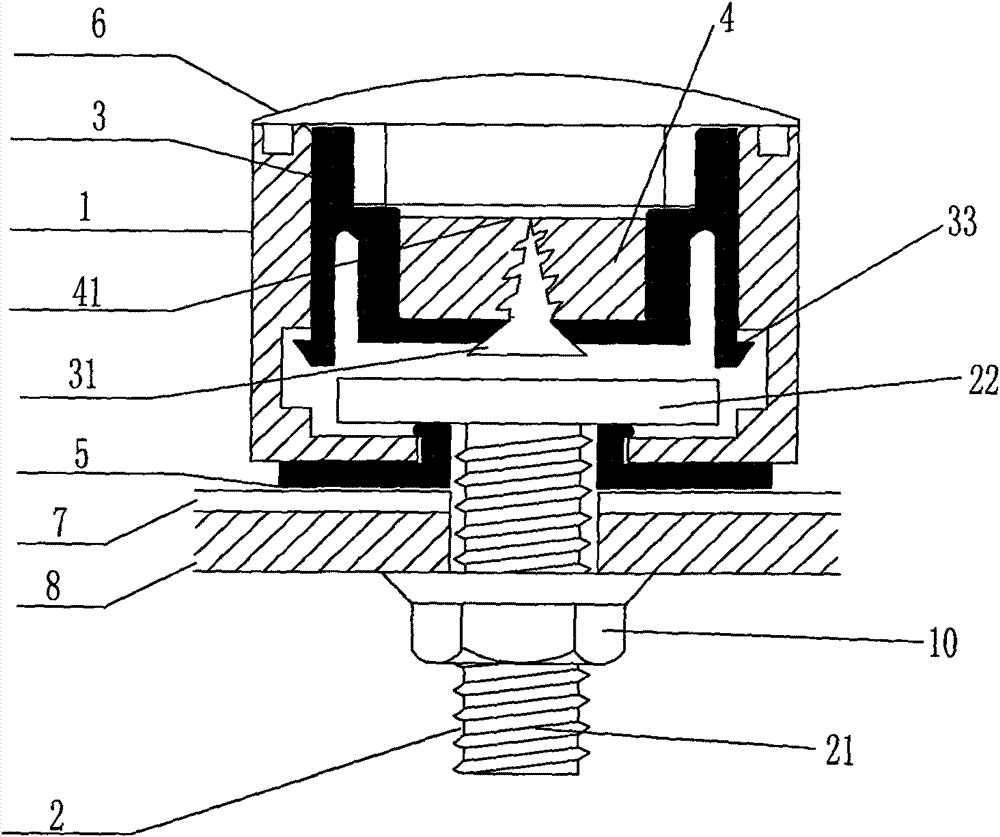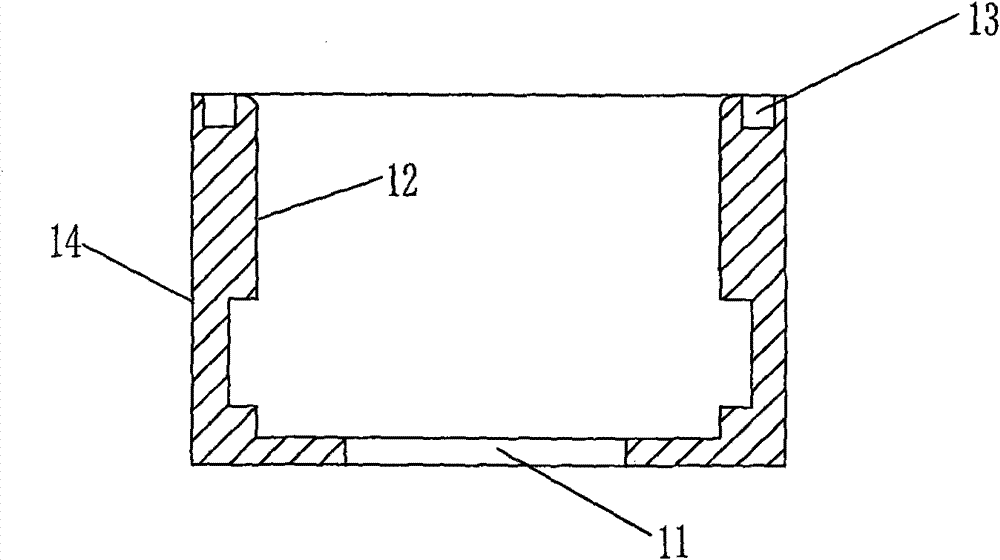Sealing device capable of producing stealing identification mark
A technology of closing device and identification mark, which is applied in the field of anti-theft and anti-counterfeiting closing devices to achieve the effect of improving efficiency and solving manual assembly
- Summary
- Abstract
- Description
- Claims
- Application Information
AI Technical Summary
Problems solved by technology
Method used
Image
Examples
Embodiment approach 1
[0031] Embodiment 1: The closing part is clamped on the bottom of the clasp ring of the casing by a buckle mechanism, so that it is confined in the casing, but the closing part can move up and down freely in the casing.
[0032] see Figure 1-Figure 5, the closing device for stealing identification includes a shell 1, a screw 2, a closing member 3, a lead 4, a chuck 5, and a transparent convex mirror 6. Among them: the shell 1 has a round hole 11 at the bottom, and a groove 13 is formed on the open end surface; the closing part 3 has a cavity 32, and the self-tapping screw 31 is installed on the closing part 3 and is located in the cavity 32; the chuck 5 is in the center A circular hole 51 is formed at the position, and a vertical cylinder 52 is formed by extending upward from the periphery of the circular hole 51. The cylinder 52 is formed with a card edge 53 extending outward along the horizontal direction at the port, and the diameter of the chuck 5 is smaller than the diam...
Embodiment approach 2
[0035] Implementation mode two: refer to Figure 6 The difference between the second embodiment and the first embodiment is the buckle mechanism. In this example, the buckle mechanism of the closure is formed by an oblate circle 32 embedded in the bottom of the closure, and the oblate circle 32 is buckled on the buckle At the bottom of 12, the closing member is constrained in the housing, but can rotate freely in the housing. For other details, see Embodiment 1.
Embodiment approach 3
[0036] Implementation Mode Three: Refer to Figure 7 The difference between the third embodiment and the first embodiment is the closing member. In this example, the closing member is formed by directly squeezing the lead 4 in the inner cavity of the shell 1, wherein the closing member is solid in the inner cavity. Tight, cannot turn. For other details, see Embodiment 1.
PUM
 Login to View More
Login to View More Abstract
Description
Claims
Application Information
 Login to View More
Login to View More - R&D
- Intellectual Property
- Life Sciences
- Materials
- Tech Scout
- Unparalleled Data Quality
- Higher Quality Content
- 60% Fewer Hallucinations
Browse by: Latest US Patents, China's latest patents, Technical Efficacy Thesaurus, Application Domain, Technology Topic, Popular Technical Reports.
© 2025 PatSnap. All rights reserved.Legal|Privacy policy|Modern Slavery Act Transparency Statement|Sitemap|About US| Contact US: help@patsnap.com



